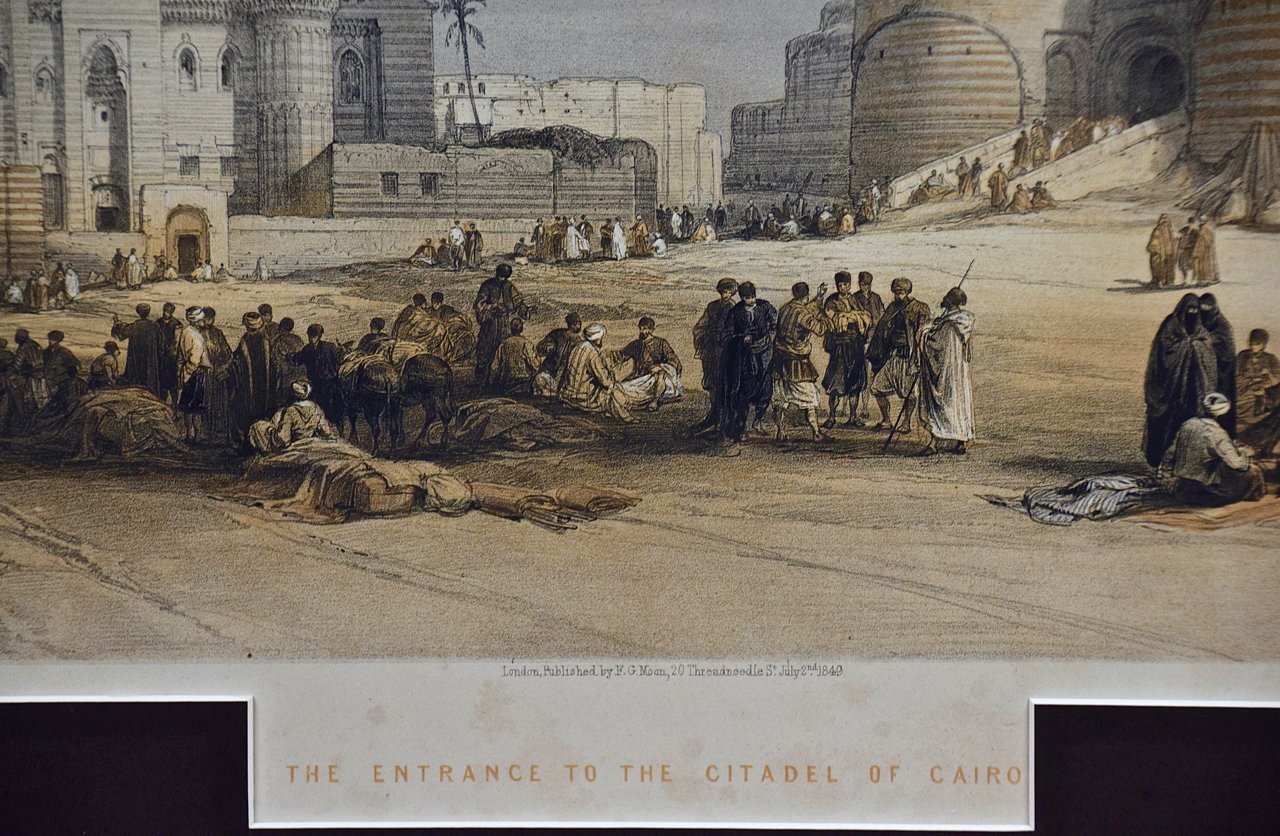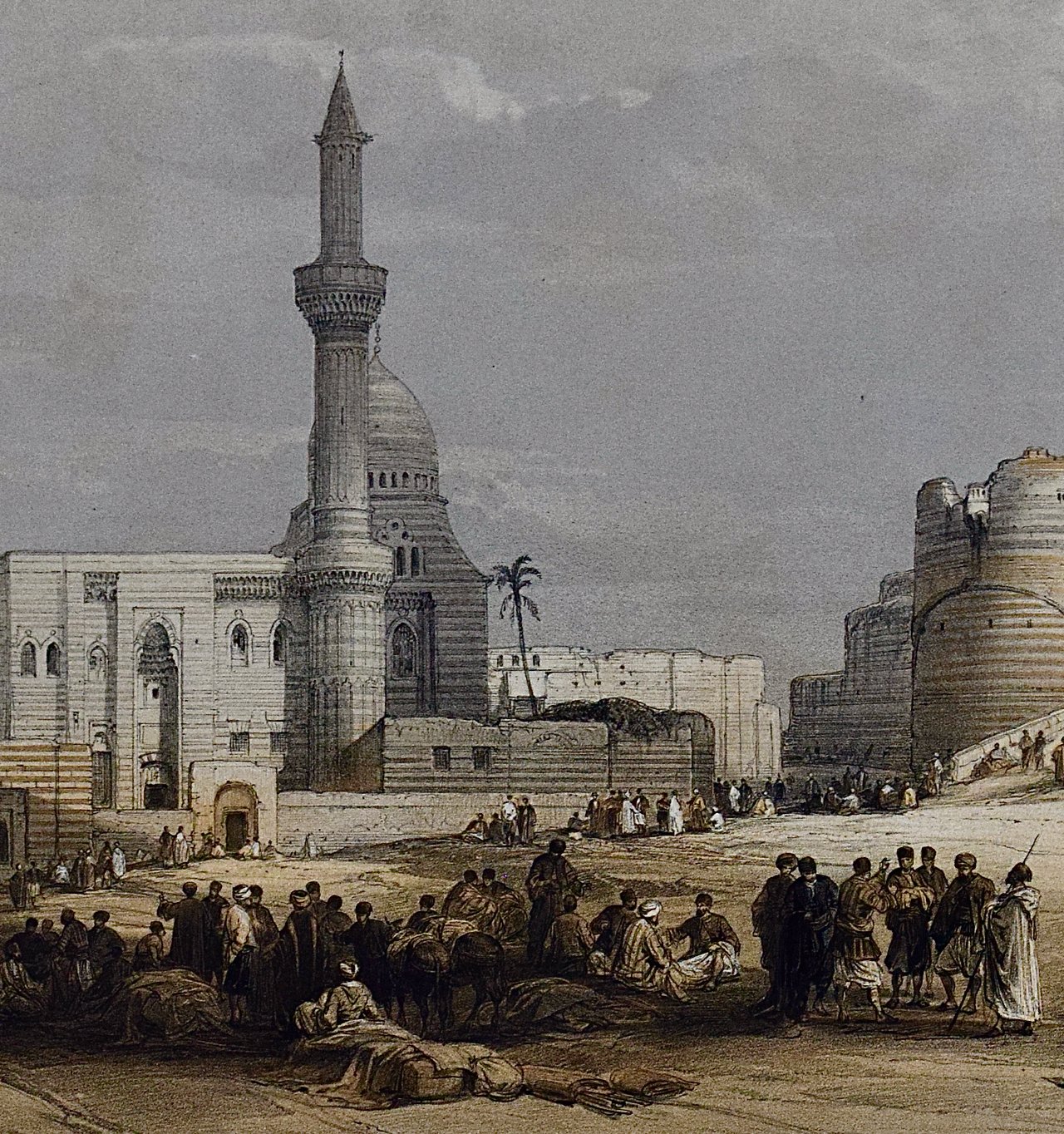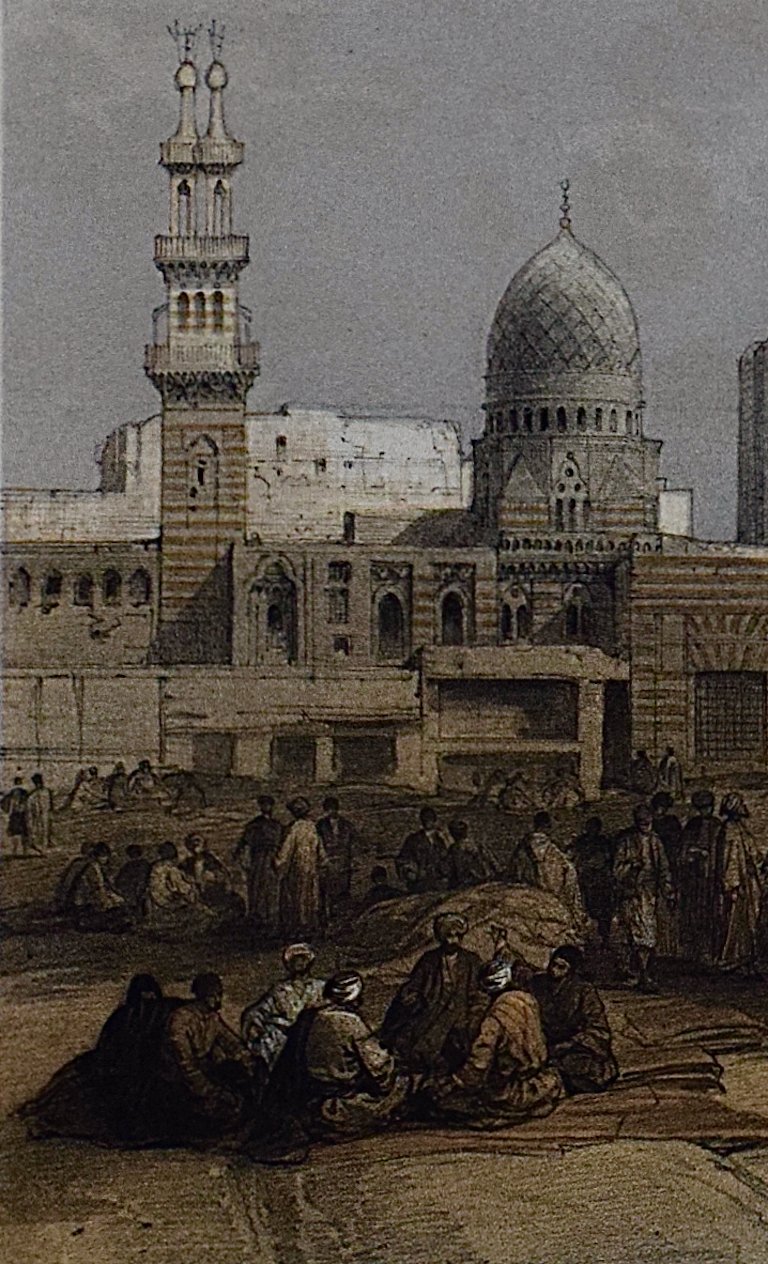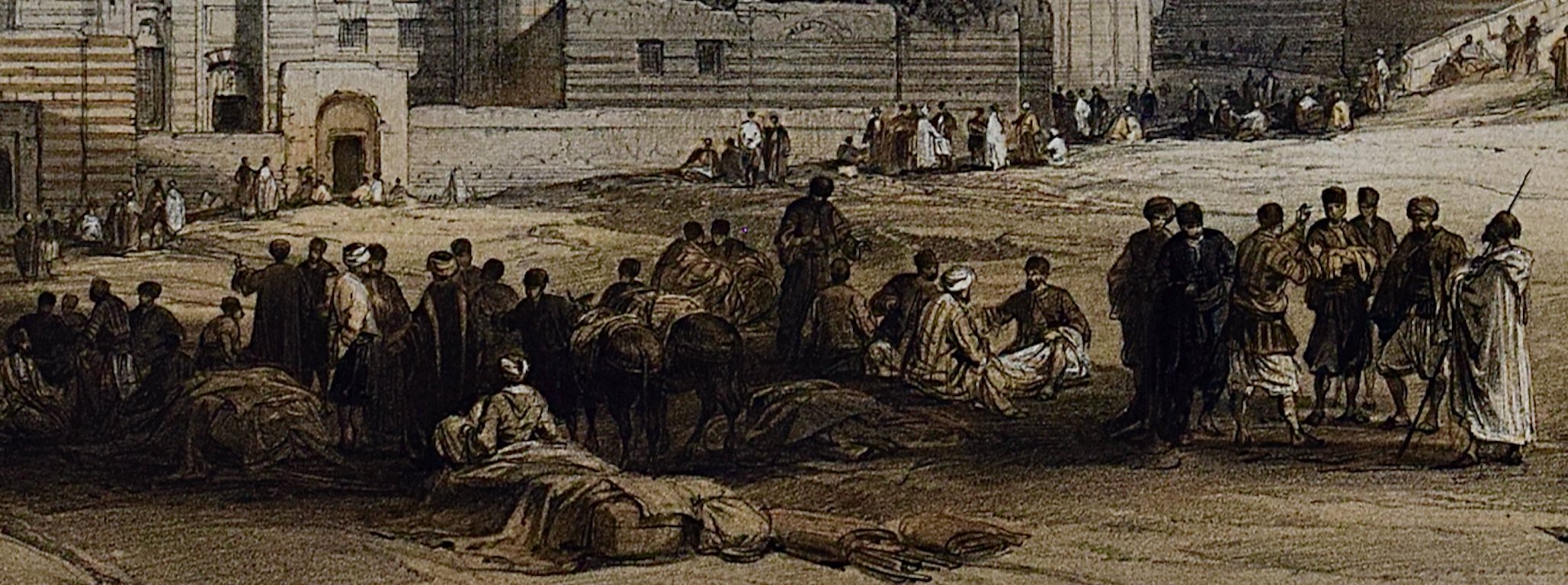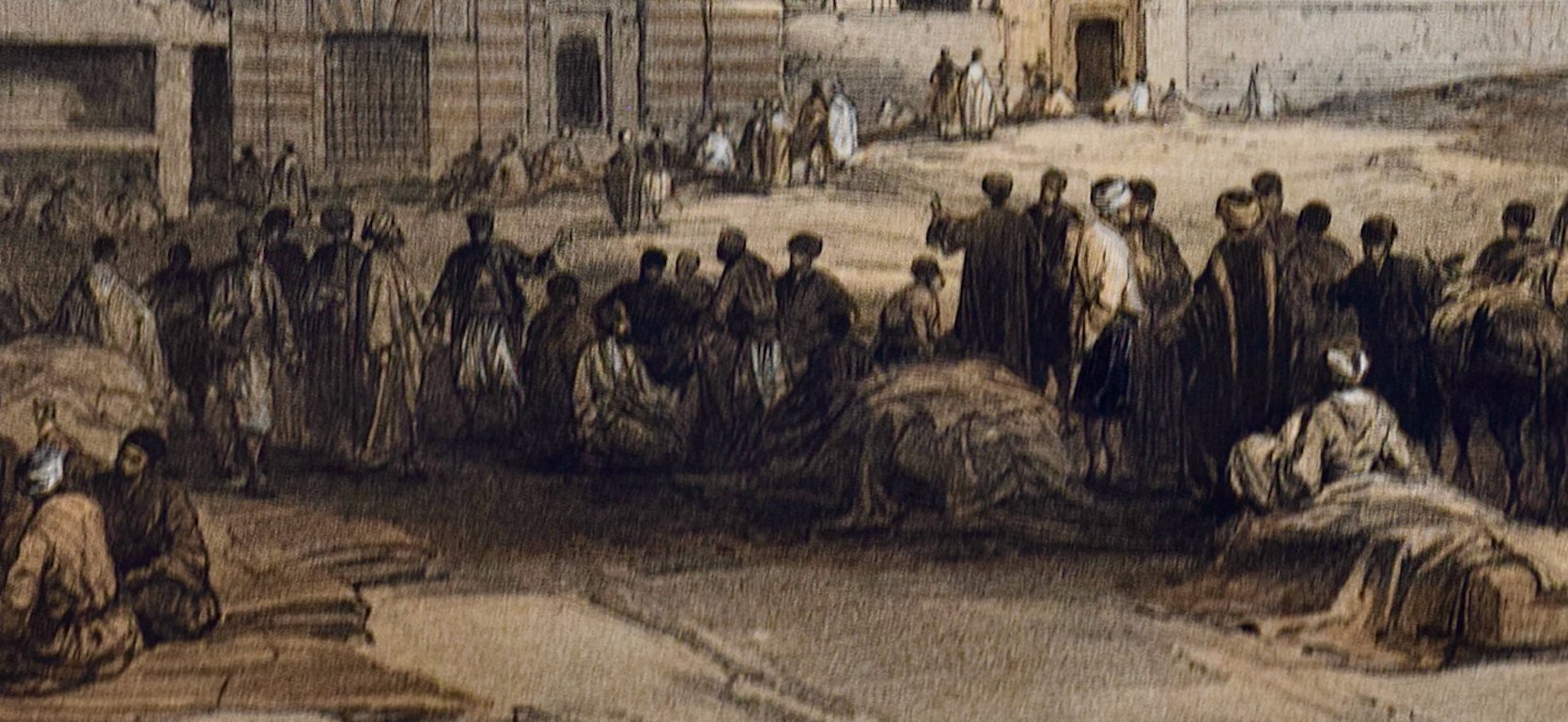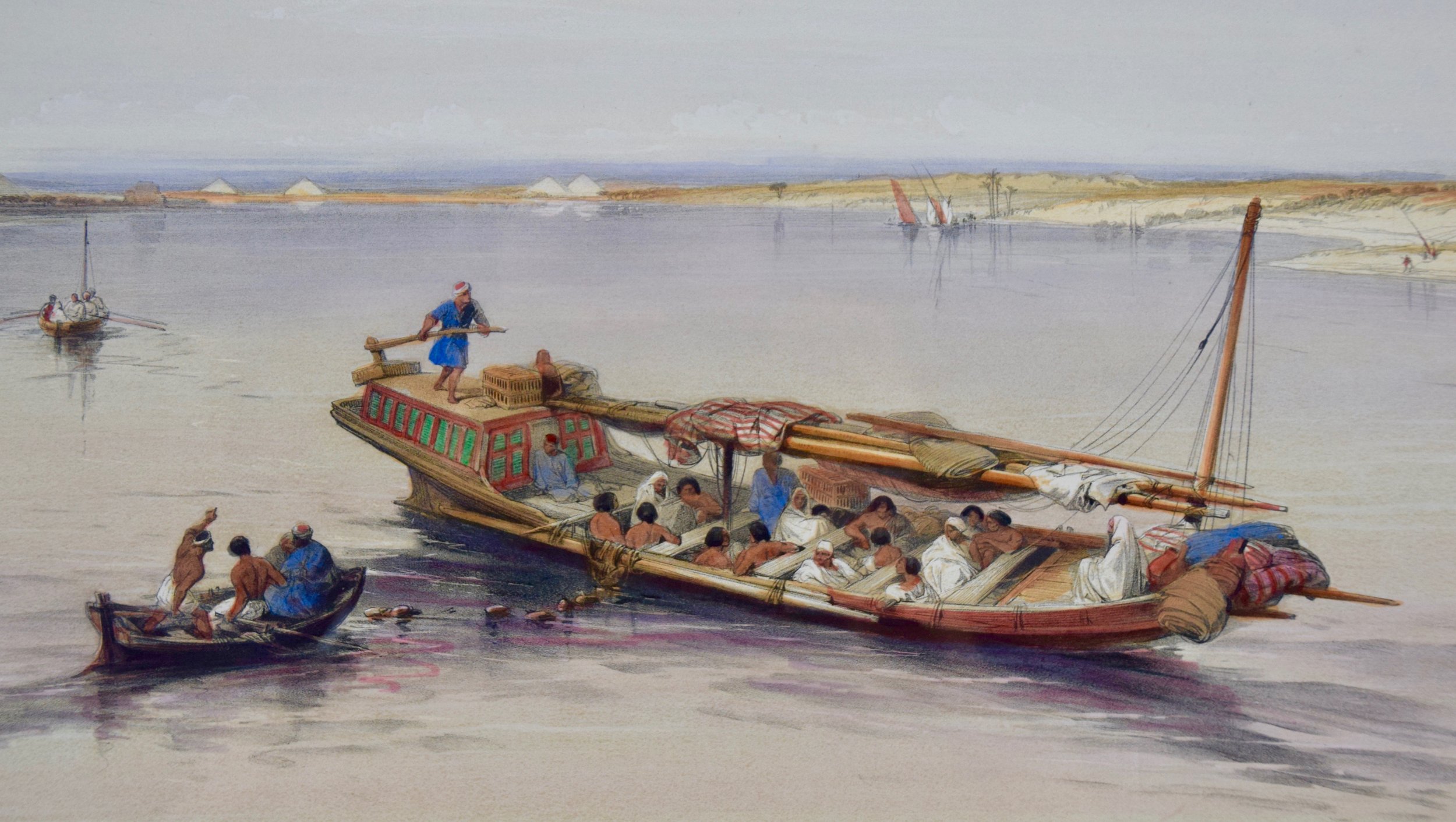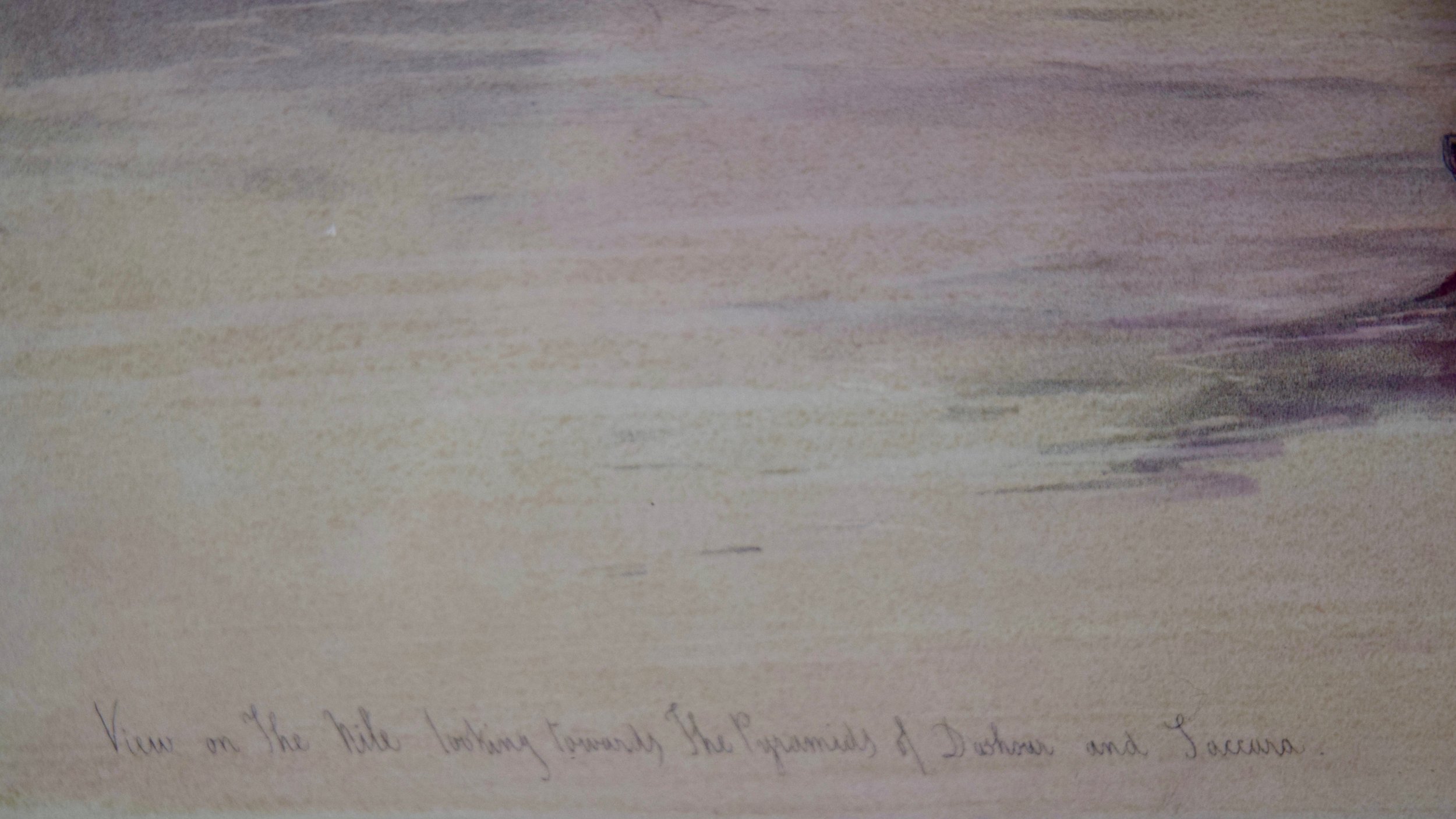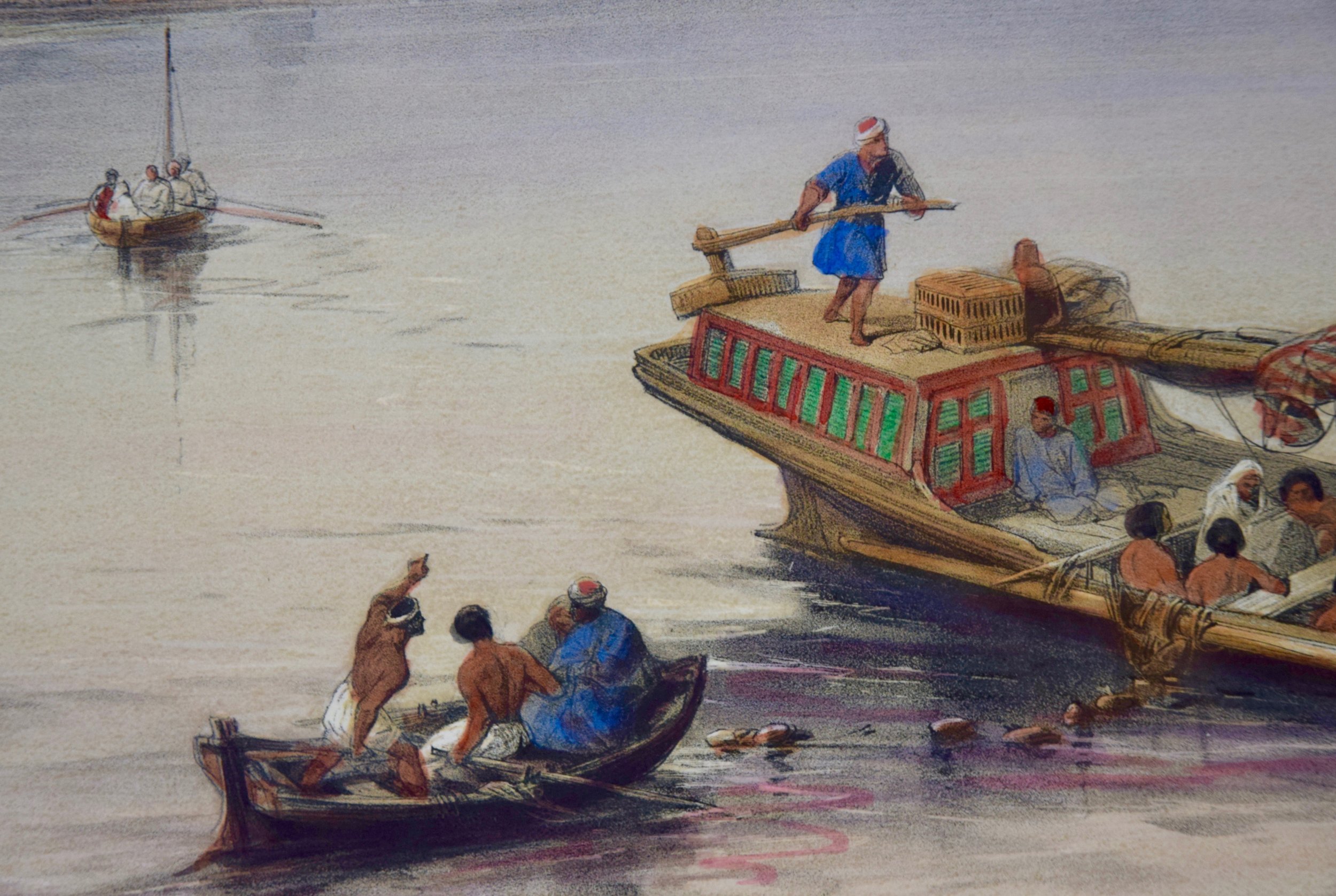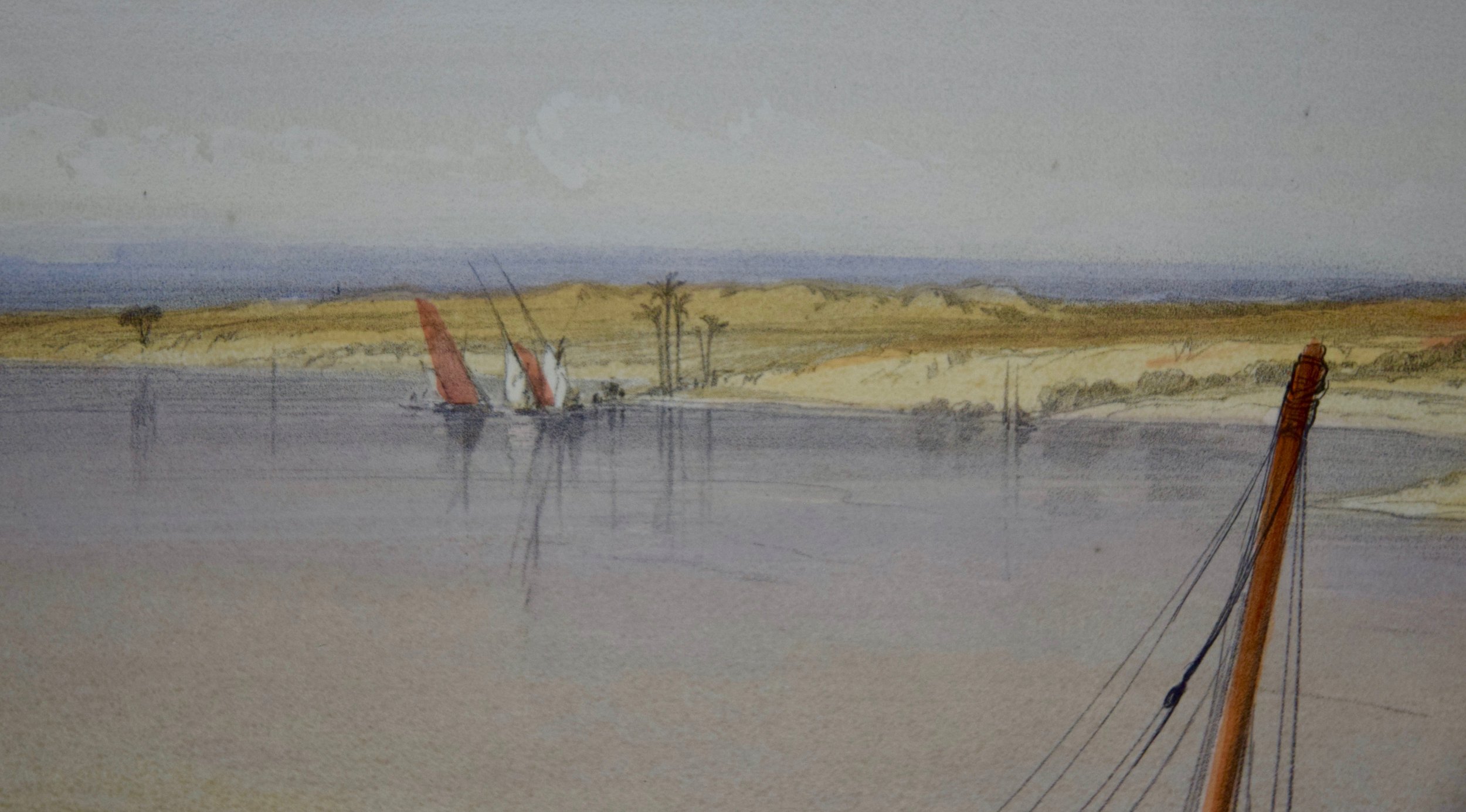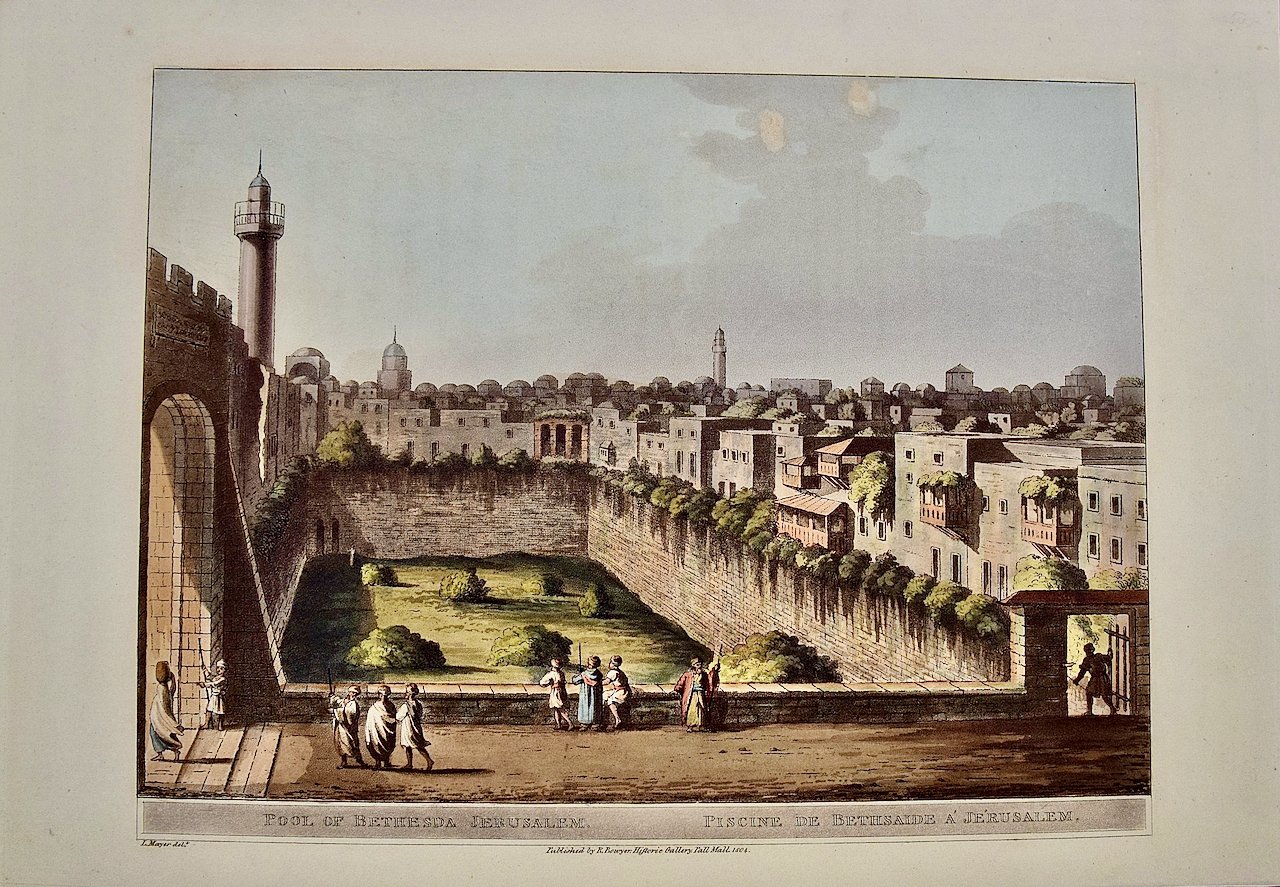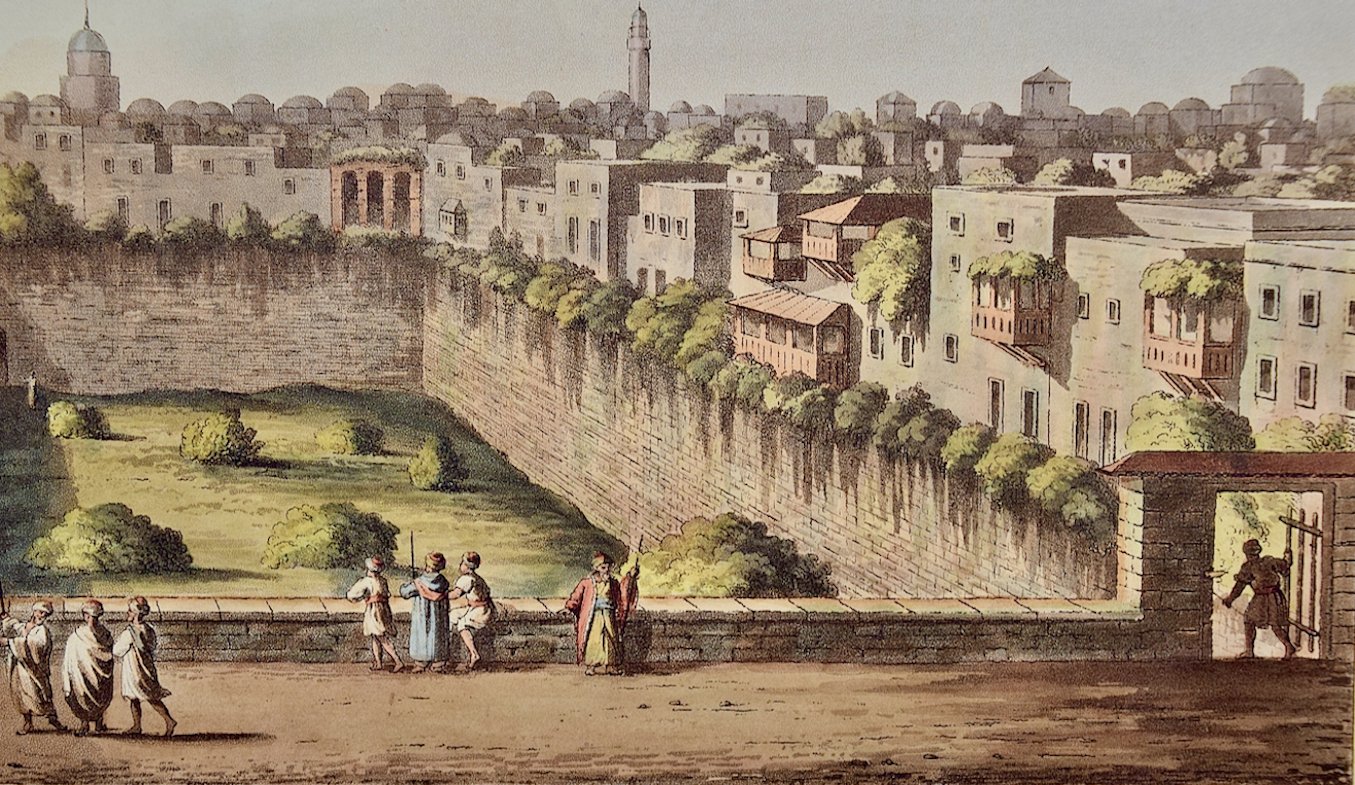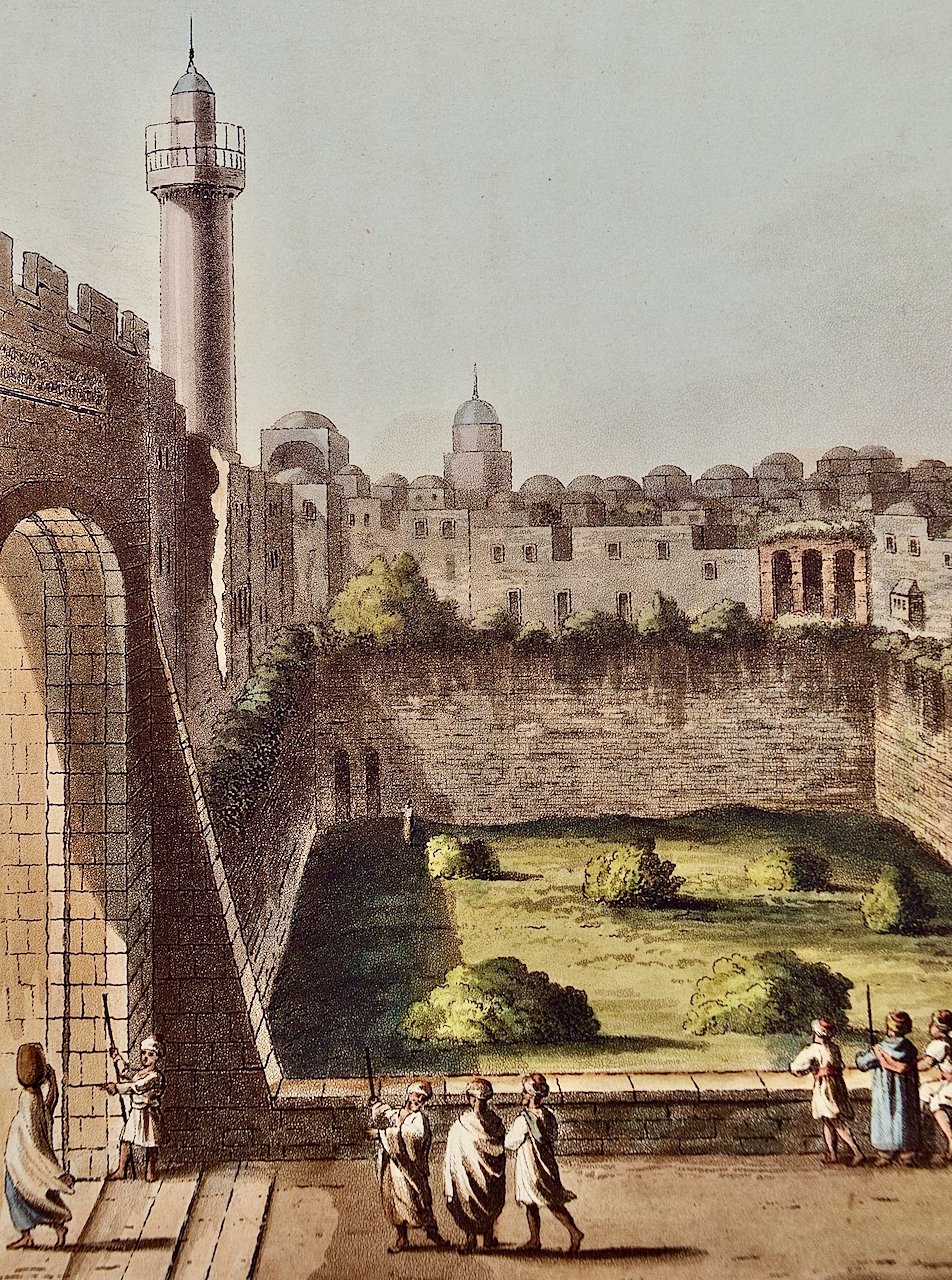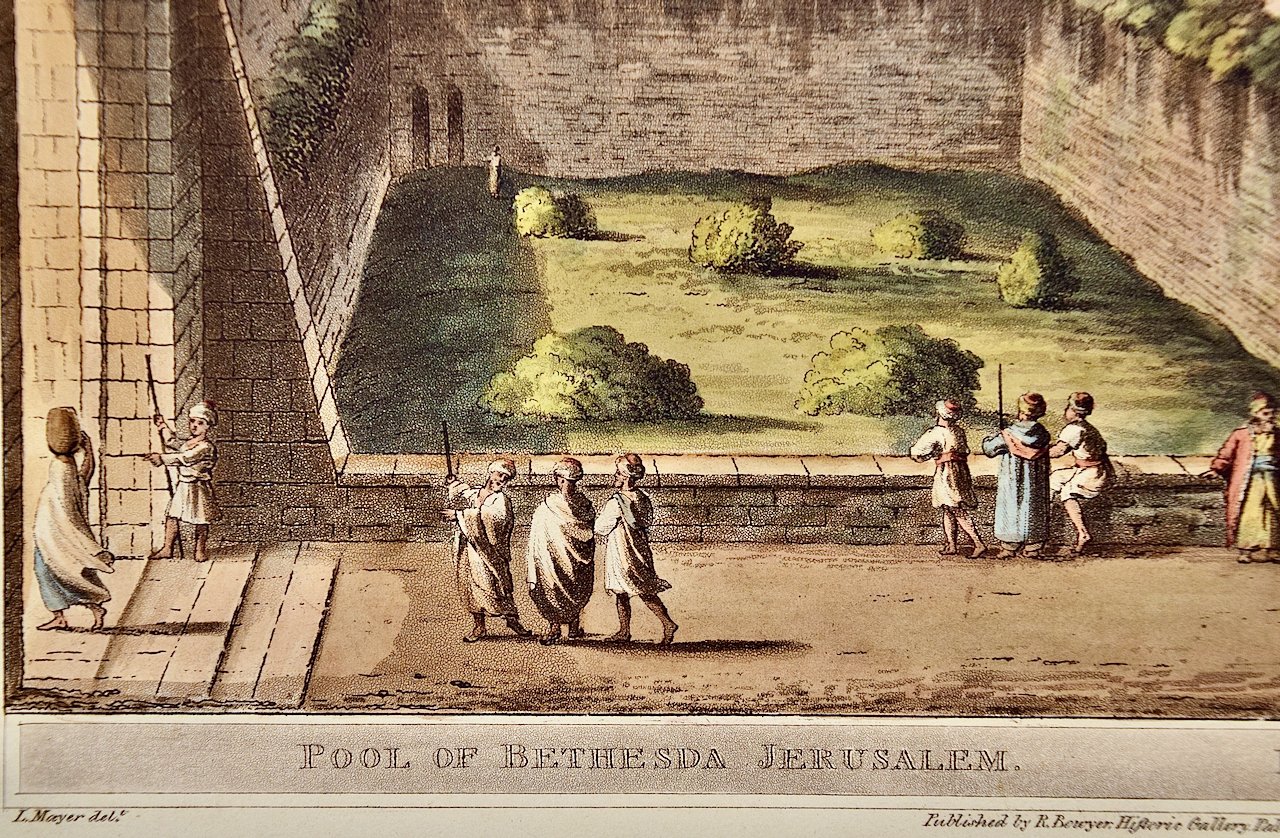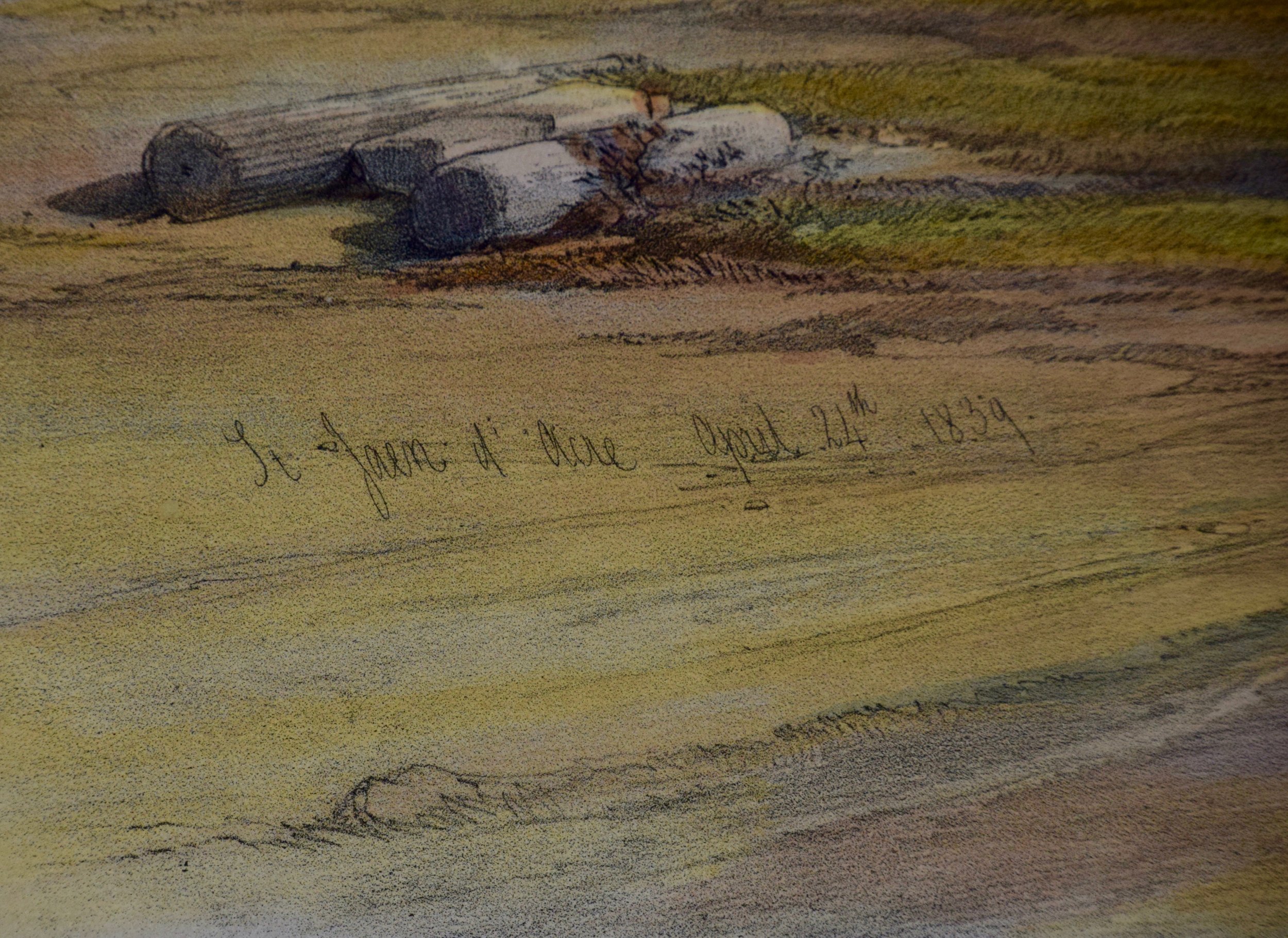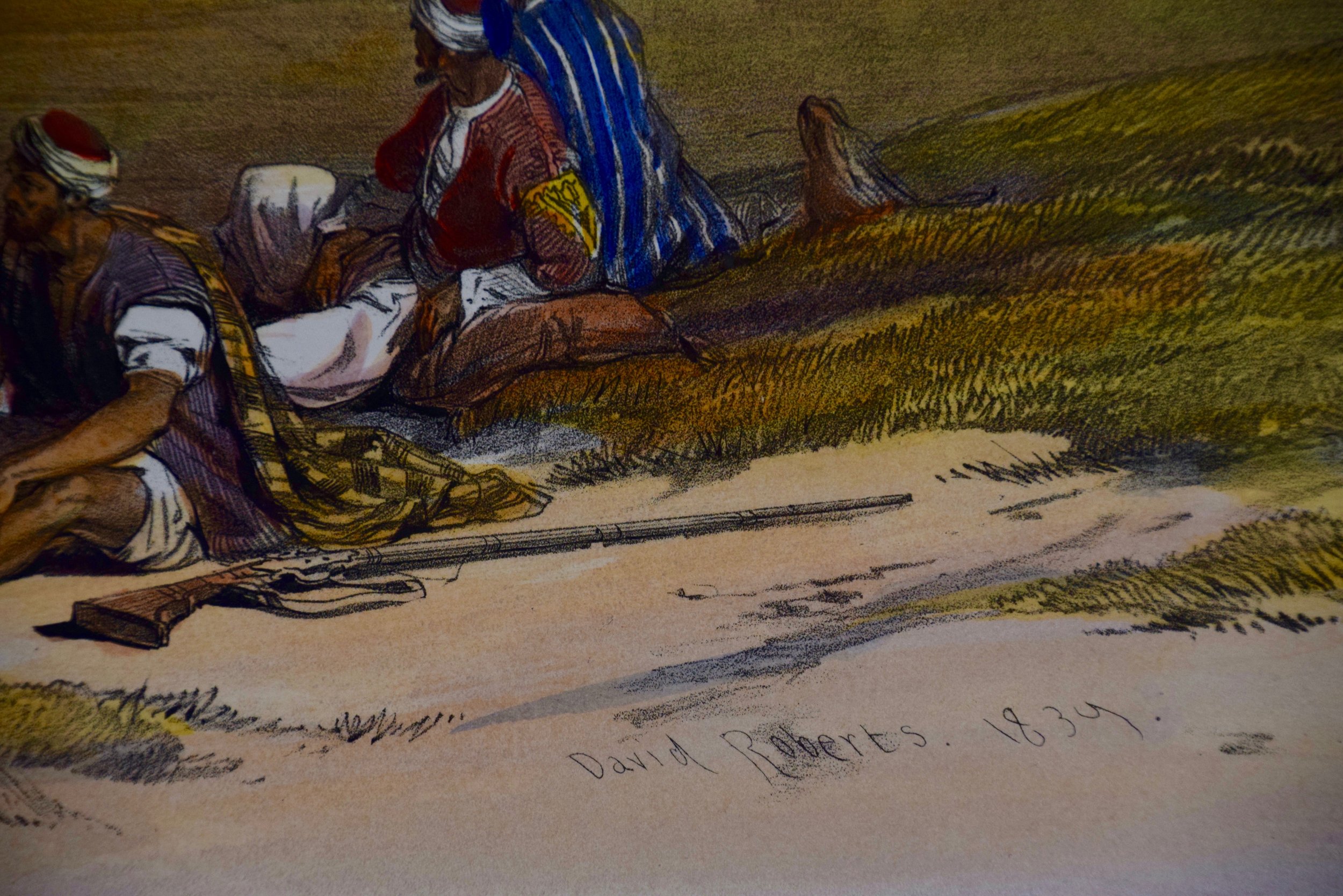"Entrance to the Citadel Cairo": David Roberts' 19th C. Hand Colored Lithograph
"Entrance to the Citadel of Cairo" is a 19th century full folio sized duotone lithograph from the Egypt and Nubia volumes of David Roberts’ large folio edition, published in London by F. G. Moon in 1849. The lithographs were prepared by Louis Haghe (1806-1885) from drawings and paintings by Roberts. The resultant large folio editions of 'The Holy Land' and 'Egypt & Nubia' are considered the greatest lithographically illustrated works issued in the 19th century.
Creator: David Roberts (1796-1864, British)
Creation Year: 1849
Dimensions: Height: 20.25 in (51.44 cm) Width: 26.63 in (67.65 cm) Depth: 0.75 in (1.91 cm)
Medium: Lithograph
Condition: See description below.
Reference #: 4611
"Entrance to the Citadel of Cairo" is a 19th century full folio sized duotone lithograph from the Egypt and Nubia volumes of David Roberts’ large folio edition, published in London by F. G. Moon in 1849. The lithographs were prepared by Louis Haghe (1806-1885) from drawings and paintings by Roberts. The resultant large folio editions of 'The Holy Land' and 'Egypt & Nubia' are considered the greatest lithographically illustrated works issued in the 19th century.
Creator: David Roberts (1796-1864, British)
Creation Year: 1849
Dimensions: Height: 20.25 in (51.44 cm) Width: 26.63 in (67.65 cm) Depth: 0.75 in (1.91 cm)
Medium: Lithograph
Condition: See description below.
Reference #: 4611
"Entrance to the Citadel of Cairo" is a 19th century full folio sized duotone lithograph from the Egypt and Nubia volumes of David Roberts’ large folio edition, published in London by F. G. Moon in 1849. The lithographs were prepared by Louis Haghe (1806-1885) from drawings and paintings by Roberts. The resultant large folio editions of 'The Holy Land' and 'Egypt & Nubia' are considered the greatest lithographically illustrated works issued in the 19th century.
Creator: David Roberts (1796-1864, British)
Creation Year: 1849
Dimensions: Height: 20.25 in (51.44 cm) Width: 26.63 in (67.65 cm) Depth: 0.75 in (1.91 cm)
Medium: Lithograph
Condition: See description below.
Reference #: 4611
The drawings and watercolours from this tour of the Holy Land and Egypt were collated together into folios and released over a seven year period by the publisher F.G. Moon from 20 Threadneedle Street London. This lithograph is from the Royal Subscription Edition (1842-1849) with only 500 copies produced per depiction. Louis Haghe (the Belgian engraver and friend of Roberts) worked on all of the lithographs for this series.
The print is presented in a dark brown-colored wood frame with a decorative gold-colored inner trim and a dark grey mat with a lower cutout revealing the title. There are very faint spots in the left upper corner and the lower margin. The print is otherwise in excellent condition.
“Entrance to the Citadel of Cairo” (the title is written in script in the plate in the lower left) is a full folio-sized duotone scene depicting the main entrance to Cairo. Cairo's main square in the foreground contains the sacred Mosque of the Sultan Hassan. Throngs of people are seen approaching the great gate to the citadel on the right. Huge round towers guard the citadel's flanks. The citadel was built by Saladin during the crusades to protect the city. Egyptian sultans and politicians have occupied it through the centuries. Multiple minarets are shown, the largest in the center of the scene, in front of the mosque. Tradesmen, musicians, story-tellers inhabitants and visitors to the city are depicted in the square conducting business, conversing in groups, and walking through the square to reach the entrance to the city.
David Roberts (1796-1864) was born outside of Edinburgh, Scotland. At age 10 he became a house painter’s apprentice. He continued painting houses and eventually theater scenes in Edinburgh and then in London. His friend, J. M. W. Turner, recognized his artistic talent and encouraged him to become a full-time artist.
In 1839 Roberts traveled to Egypt and then in 1840, through the Holy Land, concluding in Jerusalem. Upon his return to England, F. G. Moon agreed to publish lithographs created by Louis Haghe from Robert’s sketches and watercolors. This publication was highly acclaimed and very popular for its esthetic quality, its historical and topographical accuracy, and Robert’s dramatic depiction of his scenes. Queen Victoria and Charles Dickens were among the subscribers who collected his works. Roberts' and Haghe’s duotone lithographs, often colored, remain extremely sought-after today and have been rising steadily in value.





